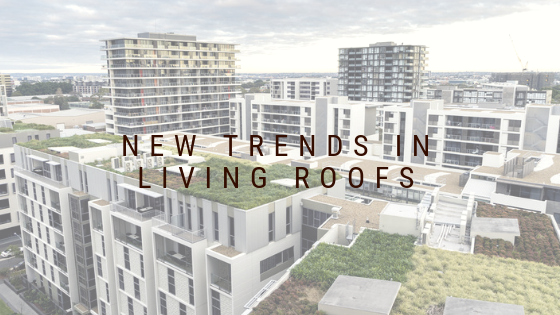New Trends in Living Roofs

Living roofs made out of sod strips are labor-free since the materials used to make them are readily available in the backyard. Sod is fireproof and thus makes an amazing insulator for harsh climates. A living roof is a roof that has living plants planted and nurtured on it. The plants could completely or partially cover the roof. There are so many reasons why people opt to have green roofs. The most common include it minimizes the loss of heat by insulating the roof, it protects the building from direct sun, and it reduces the heat flux that reduces costs for maintaining the heating and cooling energy. Sod can be incorporated into any roofing material option.
Things You Should Note About a Living Roof That Has Sod Strips
- Sod is readily available and long lasting. You could stock it up as you build your house then when it is time to roof if, you could take the stocked sod and plant it in strips
- It works best if it has about four inches of pitch to the foot. Nevertheless, if your roof is flat it could still be made to be watertight.
- The ideal thickness for roofing the sod is six to ten inches. However, eight inches is the most preferred.
- You need to have grass since its fine root pattern is best suited for the living roof. It creates a tight root pattern that gives the sod strips more holding power. In addition to this, it provides insulating qualities that are similar to those of fiberglass. However, weeds can work too.
- It conforms to the shape of the plant bed that you choose. This means that it can be shaped and that you will not have to worry about trimming because of roof edge spillage.
- Use cedar logs to line the perimeter of the roof. This will prevent the rain or wind from eroding the sod bed off the roof. This specific type of log is rot and bug resistant, and durable.
- As you install the logs, make sure that you do not nail them. It would be better if you spiked them. This way, you would not cause a leak by damaging the roof itself.
- They are fast and easy to repair. If the living roof with sod strips is damaged, all you have to do is to pull three to four square turf feet in the leaking area. Then proceed to apply salvage cement. The repair is complete.
A living roof does not mean that the roof will resemble a small forest. When you think about green roofs, eliminate the thought of having a small forest on the roof. You have to limit the plants that you grow on the roof because the roots of shrubs and trees are detrimental to the roof. They have the potential of penetrating the sheathing, roll roofing, plastic, and cement. This gives room for water and moisture to damage the interior of the roof making it rot from the inside out or even to damage the interior of the house and your property.

In Awe Roofing Limited is an Award-Winning, family owned and operated Vancouver Roofing Contractor with over 17 years of roofing experience. We serve the entire Lower Mainland area, from Whistler to Chilliwack, employing a team of professional staff members. Our team has won numerous awards including Best of Homestars for the last five years, and Three Best Rated six years in a row. Learn more






















